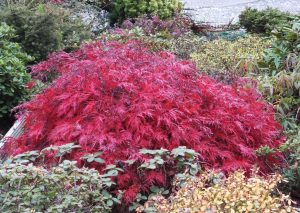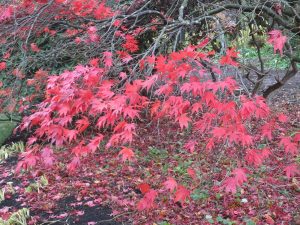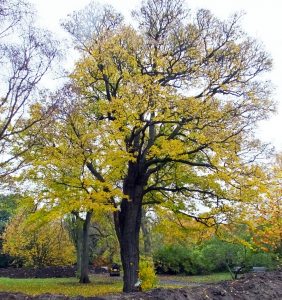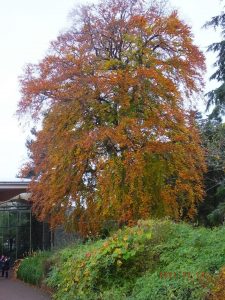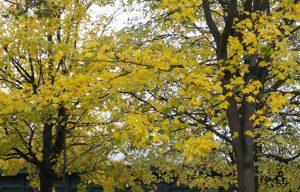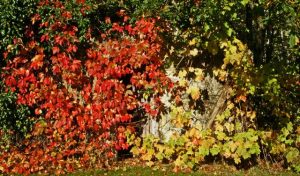Autumn Leaves
Autumn colours are the result of chemical reactions that occur as the leaves of deciduous trees begin to die. In summer, leaves produce food from sunlight through green chlorophyll. As summer ends, the cooler weather and shorter days trigger them to stop producing chlorophyll and other pigments become prominent. Carotenoid turns the leaf golden, and anthocyanin produces red.
- Japanese Maple
- Acer palmatum
Different species vary in the amount of these pigments that they carry. Many of the most colourful autumn leaves are on imported trees such as American and Japanese maples whilst British native trees tend to turn gold rather than red.
- Field Maple
- Beech
Although most conifers are evergreen Larch is an exception, showing golden needles just now. The colours are not the same each year. Windy weather shortens the show, whilst settled weather with cool nights prolongs it. A dry summer increases anthocyanin production leading to better reds and bronzes. Leaves in hedges last longer than on trees (less prone to be blown off by the wind). Beech hedges hold their leaves all winter. Some climbers provide good autumn colour, notably the Virginia creeper and closely related Boston ivy.
- Sycamore
- Virginia Creeper
When leaves do fall, they can be collected and composted to turn into leaf mould, one of the most useful materials in any garden. You can read our article on how to make leaf mould here.


